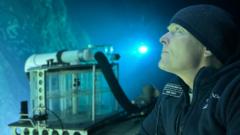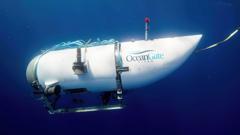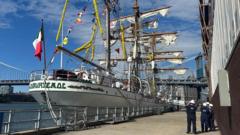The Titan submersible, operated by OceanGate, imploded during a journey to the Titanic wreck, leading to the tragic deaths of all five individuals aboard. A recent report from the US National Transportation Safety Board (NTSB) has identified inadequate engineering processes and a lack of proper testing as key contributors to this disaster.
According to the NTSB's findings, the engineering behind Titan was deemed insufficient, with numerous failures preventing the vessel from meeting critical strength and durability standards. The investigation revealed that OceanGate was unaware of the true strength of the Titan and failed to recognize damage that should have led to the vessel being taken out of service before its ill-fated dive.
The Titan vanished in the North Atlantic while attempting to reach the Titanic wreck, located approximately 3,880 meters below sea level. In its August report, the US Coast Guard criticized OceanGate's safety practices as 'critically flawed', stating that the incident could have been prevented.
The passengers included deep-sea explorer Paul-Henri Nargeolet, businessman Hamish Harding, and the Dawood family, who each paid up to $250,000 for the dive. The Titan, measuring 6.7 meters in length, incorporated carbon fiber and titanium in its design. However, the submersible had already undergone condemnation of its first version due to testing failures.
Further investigation shed light on the safety culture at OceanGate, with some employees claiming that safety concerns were inadequately addressed, particularly regarding design flaws. A technician's testimony pointed to OceanGate's model of treating customers as 'mission specialists' rather than passengers, which bypassed the legally enforced safety protocols for experimental submersibles.
The NTSB report has underscored the urgent need for revised regulations for pressure vessels carrying people in deep-sea explorations, calling for the US Coast Guard to undertake a comprehensive review of current assessments and potential regulatory changes to prevent future tragedies.




















